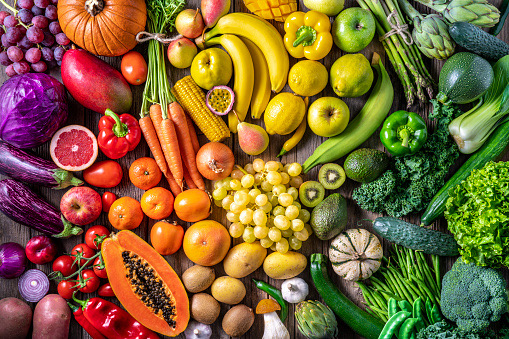
What are the health advantages of eating raw foods? What are the possible risks? Here are some reasons you should consider raw food. In addition to health benefits, this diet has a cost. For a raw food diet to be beneficial, you must be prepared to pay a high price. In the end, however, it is worthwhile. In the end, raw food is more beneficial than it is harmful.
Raw foods: What are some good food choices?
Many raw food diet recipes use fruits and vegetables. These meals are great for breakfast because they are so tasty. You can add a bit of cheese or a nut butter to make them even more tempting. Smoothies are a great way of enjoying this diet without having to give up your comfort foods. You can mix a variety of ingredients into a smoothie.
One of the main drawbacks to raw food diets is the limited choices in food and difficulty in preparing them. You'll likely get bored with the food, and the cooking process. While this may not be harmful in the short-term it can cause you to become bored with the food and the preparation process. Your diet should include fresh, natural foods. These are just two of many benefits of a raw-food diet. It's possible to give it a try for a week before you return to your usual eating habits.

Health benefits
It is possible to wonder if raw food has any health benefits. While it might seem obvious, raw foods offer many health benefits. You'll feel more energetic. You may also notice clearer skin and more alertness. You might even lose weight. You should be aware of a few points before you try to eat raw foods. If you have digestive problems, you should avoid eating raw animal products.
For your daily food choices, ensure you only choose organic and locally grown produce. Avoid non-organic produce as it can be loaded with pesticides or toxins. Furthermore, if you're planning to eat meat, be sure to avoid it, because raw meat can harbor parasites and bacteria. Fruitarians may enjoy many health benefits, but the best raw food diet is a fruitarian one.
Health risks
Consuming raw meat, fish, or poultry can pose many health risks. Raw animal products are high in bacteria and can also be contaminated with harmful toxins. Raw meats like chicken, pork, beef and other poultry can be hazardous. While raw meat is generally safe, you should wash fruits and vegetables thoroughly before consuming them. Consuming raw meat can also cause stomach complications or even serious infections. These risks must be considered before you decide to eat raw meat.
According to the CDC, Salmonella is responsible more food-borne diseases than any other bacteria. One in 25 chicken packages purchased at a grocery store is contaminated. Raw chicken can cause food poisoning whether it has been contaminated by the chicken's processing or by simply contaminating surfaces in your kitchen or fridge. You should also remember that chicken juices can cause food poisoning in other foods.

Cost
How you prepare your meals can impact how much it costs to eat raw. Fast-growing costs can be incurred for superfoods, supplements, or even organic products. You may end up spending more money than your budget allows. Here are some tips to help you save on your raw food meals. The first step is to choose food that is in season. This will minimize food waste and increase the nutritional value of your meals. Also, shop in bulk. Many shops offer bulk discounts for large orders.
A great way to save money on raw food is to buy organic groceries. Raw foods are often cheaper than cooked food. While raw food is more healthy for your pet than cooked, it can still be costly to prepare your own food. Raw food requires a longer preparation time than cooked meals. You can also purchase sprouting, germinating and dehydrating nuts. Whole premade meals can be purchased, which can help you save time and money.
FAQ
Is being cold good for your immune system.
Being cold gives you a weaker immune system because when you are cold, your body produces less white blood cells which fight infections. But, cold makes you feel better. Your brain releases endorphins that reduce pain.
What can you do for your immune system to improve?
Human bodies are made up of trillions upon trillions of cells. These cells collaborate to form tissues and organs that perform specific functions. One cell is replaced by another when it dies. Hormones, which are chemical signals that allow cells to communicate with one another, enable them to do so. Hormones regulate every bodily process, from growth and development to metabolism as well as immunity.
Hormones are chemical substances that glands secrete throughout the body. They are chemicals that travel through the bloodstream and function as messengers to control how our bodies work. Some hormones come from the body and others are produced outside.
Hormone production begins when a hormone-producing gland releases its contents into the bloodstream. Once released, hormones move through the body until they reach their target organ. In some cases, hormones remain active only for a short period of time. Other hormones stay active longer and continue to influence the body's functioning even after they leave the bloodstream.
Some hormones may be produced in large numbers. Others are only produced in very small quantities.
Certain hormones can only be produced at specific times in life. Estrogen is one example. It's produced in puberty, pregnancy and menopause. Women can get estrogen to build breasts, prevent osteoporosis, and keep their bones healthy. It helps to stimulate hair growth and maintains skin's softness.
What is the difference between fat and sugar?
Fat is an energy source that comes from food. Sugar is a sweet, naturally occurring substance in fruits and vegetables. Both sugars, and fats, have the same calories. Fats however, have more calories than sugars.
Fats are stored in the body and contribute to obesity. They can cause cholesterol buildup which can lead to strokes and heart attacks.
Sugars can be quickly absorbed by your body and give you instant energy. This causes blood sugar levels to rise. High blood sugar levels can cause type II diabetes.
Statistics
- nutrients.[17]X Research sourceWhole grains to try include: 100% whole wheat pasta and bread, brown rice, whole grain oats, farro, millet, quinoa, and barley. (wikihow.com)
- WHO recommends reducing saturated fats to less than 10% of total energy intake; reducing trans-fats to less than 1% of total energy intake; and replacing both saturated fats and trans-fats to unsaturated fats. (who.int)
- The Dietary Guidelines for Americans recommend keeping added sugar intake below 10% of your daily calorie intake, while the World Health Organization recommends slashing added sugars to 5% or less of your daily calories for optimal health (59Trusted (healthline.com)
- According to the 2020 Dietary Guidelines for Americans, a balanced diet high in fruits and vegetables, lean protein, low-fat dairy and whole grains is needed for optimal energy. (mayoclinichealthsystem.org)
External Links
How To
What does the meaning of "vitamin?"
Vitamins are organic compounds that can be found in foods. Vitamins help us absorb nutrients from foods we eat. Vitamins cannot be made by the body; they must be taken from food.
There are two types if vitamins: water soluble, and fat soluble. Water-soluble vitamins dissolve easily when they are dissolved in water. Examples include vitamin C,B1 (thiamine), B2 (riboflavin), B3 (niacin), B6 (pyridoxine), folic acid, biotin, pantothenic acid, and choline. The liver and fatty tissues are home to fat-soluble vitamins. Vitamin D, E, K and A are some examples.
Vitamins are classified according their biological activity. There are eight main types of vitamins:
-
A - vital for normal growth and maintaining good health.
-
C - vital for nerve function and energy generation
-
D – Essential for healthy teeth, bones and joints
-
E - Required for good vision, reproduction.
-
K - essential for healthy nerves, muscles, and joints.
-
P – Vital for building strong bones.
-
Q - aids digestion and absorption of iron.
-
R – Required for making red blood vessels.
The recommended daily allowance of vitamins (RDA), varies depending upon age, gender, physical condition, and other factors. RDA values are set by the U.S. Food and Drug Administration (FDA).
For adults aged 19 or older, the RDA of vitamin A is 400mg per day. Pregnant mothers need 600 micrograms a day to ensure fetal growth. Children ages 1-8 require 900 micrograms per day. Children under 1 year old require 700 micrograms daily, while infants over one year old need 500 micrograms every day. This decreases between 9 and 12 months.
Children aged 1-18 require 800 micrograms of sugar per day, while those who weigh more than 1200 need 1000. For their nutritional needs, underweight children need 1200 mg per day.
Children ages 4-8 years who have been diagnosed with anemia need 2200 micrograms per day of vitamin C.
2000 micrograms is the minimum daily intake for general health in adults older than 50 years. Breastfeeding or pregnant women require 3000 micrograms per daily due to higher nutrient demands.
Adults over 70 years of age need 1500 micrograms per day since they lose about 10% of their muscle mass each decade.
Women who are pregnant or lactating need more than the RDA. Pregnant women need 4000 micrograms per dayduring pregnancy and 2500 micrograms per day after delivery. Breastfeeding mothers need 5000 micrograms per day when breast milk is being produced.